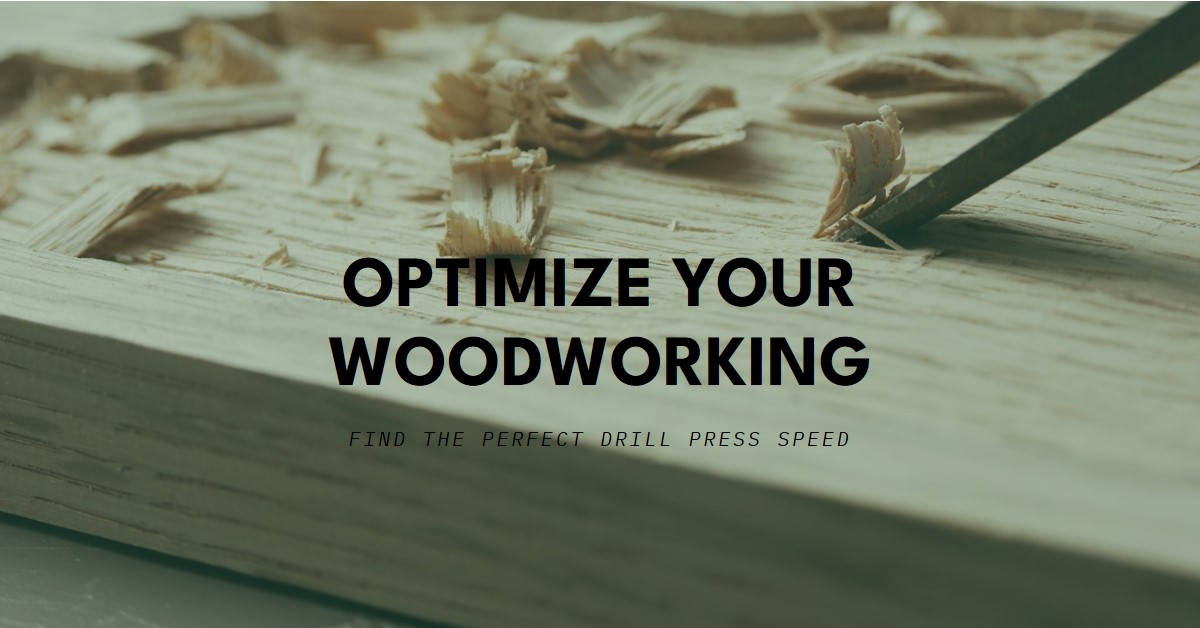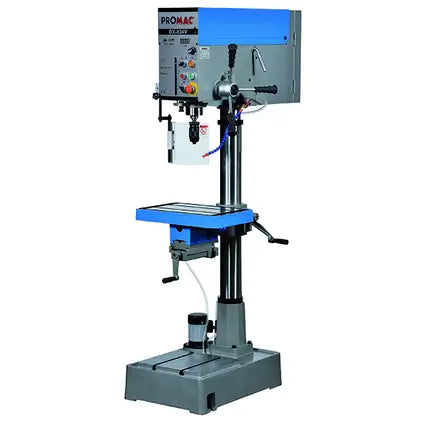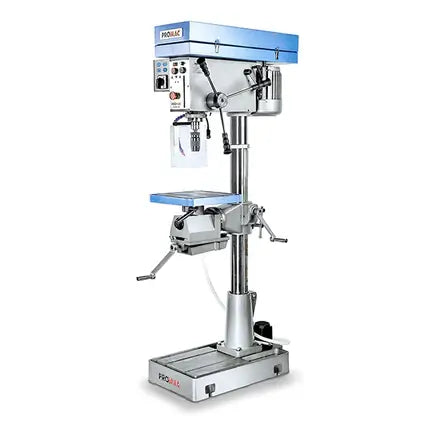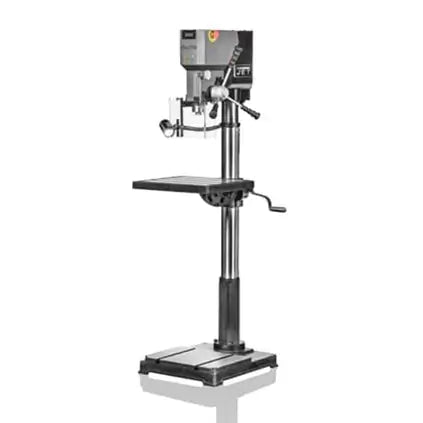
Optimal Drill Press Speed for Woodworking
In woodworking, using the correct drill press speed is essential to achieve optimal results. Different wood types require different speeds, and understanding how to choose the right speed for your project is crucial for efficiency and precision. In this section, we will explore the factors to consider when determining the drill press speed for woodworking.

Key Takeaways:
- Choosing the right drill press speed is crucial for efficient and precise woodworking.
- Different wood types require different drill press speeds.
- Factors such as wood density and drill bit diameter influence the optimal speed.
- Consider the desired outcome of the drilling when selecting the appropriate speed.
- Following recommendations based on specific wood types can ensure clean and precise results.
Factors in Determining Drill Press Speed for Woodworking
When it comes to woodworking, selecting the right drill press speed is crucial for achieving optimal results. There are several important factors to consider in determining the ideal speed for your woodworking projects.
Type of Wood
The type of wood being used plays a significant role in determining the appropriate drill press speed. Softwoods, such as pine or cedar, can generally tolerate higher speeds without detrimental effects. On the other hand, harder woods like oak or maple tend to require slower speeds to prevent burning or splintering.
Diameter of Drill Bit
The diameter of the drill bit also influences the choice of drill press speed. Larger drill bits typically require slower speeds to ensure clean and precise drilling. Conversely, smaller drill bits can handle higher speeds without compromising the quality of the hole.

Desired Outcome
Your desired outcome for the drilling project should also be taken into consideration when determining the drill press speed. If you aim for smoother, cleaner holes, using a slower speed will help achieve that. However, if you prioritize efficiency and productivity, a higher speed may be more suitable.
By considering these factors, you can select the best drill press speed for your woodworking needs, ensuring clean, accurate, and professional results.
Selecting Drill Press Speed for Different Wood Types
Different wood types have varying densities and characteristics, which means they require different drill press speeds. Choosing the correct speed for your wood drilling projects is crucial to ensure clean and precise results. Factors such as the type of wood, its density, and the desired outcome of the drilling must be considered. Below are recommendations for selecting the ideal drill press speed based on specific wood types:
Softwoods:
Softwoods, such as pine or cedar, are relatively easy to drill and typically have lower density. To prevent burning and achieve clean holes, it is advisable to use a higher drill press speed for softwoods. The higher speed helps to quickly penetrate the wood without causing excessive heat buildup. A wood drill press spindle speed of 2000-3000 RPM (revolutions per minute) is often suitable for softwoods.
Denser Hardwoods:
Denser hardwoods, like oak or maple, require slower drill press speeds to avoid burning or splintering. The higher density of these woods creates more resistance during drilling, making it necessary to reduce the drill press speed. A wood drill press spindle speed of 1000-1500 RPM is often recommended for drilling into denser hardwoods. This slower speed allows for better control and helps prevent damage to the wood.
Keep in mind that these are general recommendations and may vary depending on the specific project and desired outcome. It is always recommended to test the drill press speed on a scrap piece of wood similar to the material being used in your project to ensure optimal results.
By selecting the appropriate drill press speed for each wood type, you can achieve clean, precise, and professional-looking results in your woodworking projects.

Conclusion
Understanding the optimal drill press speed is crucial for woodworkers looking to achieve efficient and accurate drillings in various wood types. By taking into account factors such as wood density, drill bit diameter, and desired outcome, you can select the appropriate speed to ensure clean and precise results.
When working with softer woods like pine or cedar, a higher drill press speed may be suitable. However, for denser woods such as oak or maple, a slower speed is recommended to prevent burning or splintering. Remember to always adjust the speed based on the specific characteristics of the wood you are working with.
By following the recommendations provided in this article, you can enhance your woodworking projects and achieve professional-level outcomes. Whether you are a beginner or an experienced woodworker, the right drill press speed will contribute to the quality and efficiency of your work. So, take the time to choose the optimum drill press speed for wood and enjoy smoother, cleaner, and more precise drilling results.

